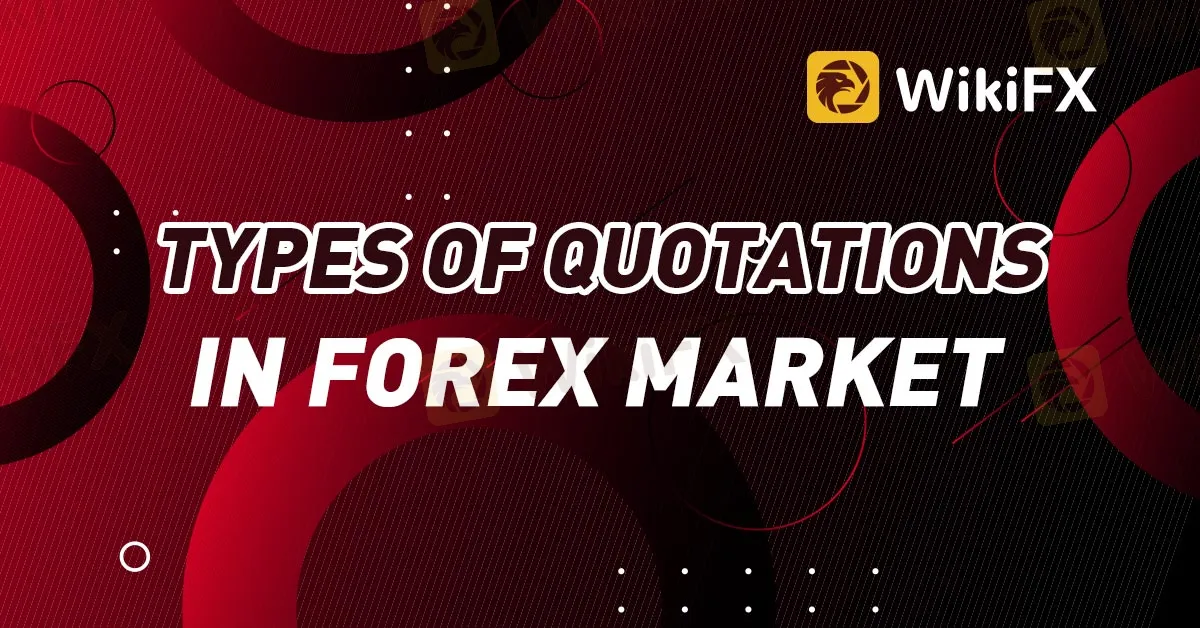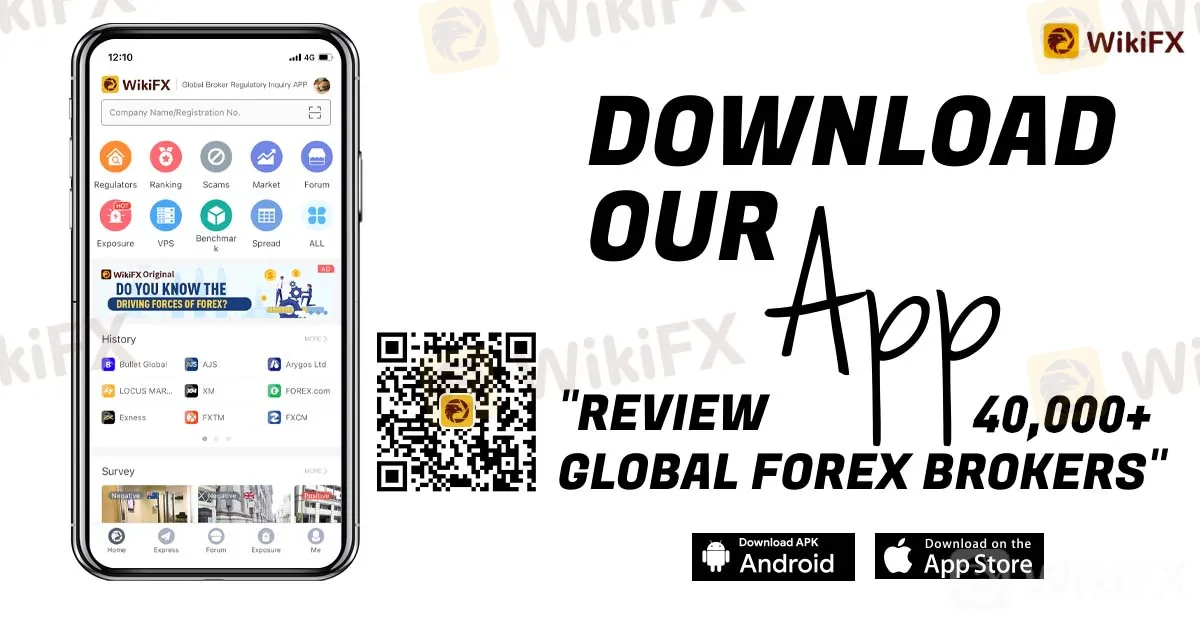简体中文
繁體中文
English
Pусский
日本語
ภาษาไทย
Tiếng Việt
Bahasa Indonesia
Español
हिन्दी
Filippiiniläinen
Français
Deutsch
Português
Türkçe
한국어
العربية
TYPES OF QUOTATIONS IN FOREX MARKET
Abstract:For the typical person, forex quotations can be pretty complicated. These quotations can be delivered in multiple ways, but it requires some education and experience to realize this. Also, it takes some getting used to before someone can swiftly understand these quotes and make snap judgments based on them. The two different forms of Forex quotations and the abbreviations that are used in them will be explained in this article.

For the typical person, forex quotations can be pretty complicated. These quotations can be delivered in multiple ways, but it requires some education and experience to realize this. Also, it takes some getting used to before someone can swiftly understand these quotes and make snap judgments based on them. The two different forms of Forex quotations and the abbreviations that are used in them will be explained in this article.
NOMENCLATURE
The currency in question's acronym is used in every quotation from the foreign exchange market. The International Standards Organization has developed standard currency keys or currency codes (ISO). All throughout the world, transactions use these keys.
Three alphabets make up the key. The first letter of the currency is represented by the third alphabet of the key, while the first two alphabets of the key indicate the country to which the money belongs. The United States dollar is therefore referred to as the USD, the Indian rupee as INR, the British pound as GBP, and the Japanese yen as JPY.
The Swiss Franc, abbreviated as CHF, and the Euro, both of which are represented by the letters EUR, are exceptions to this norm.
DIRECT QUOTATION
Meaning: With this technique, the quote is rendered in local money. This means that the exchange rate describes the relationship between one unit of the local currency and the foreign currency. What would result from an exchange of one unit of the local currency for how many units of the foreign currency? The price quotation method is another name for this approach. Hence, if the value of the local currency rises, less of it would need to be swapped. In contrast, a drop in value would make it necessary to convert a significant amount of local currency. As a result, it can be claimed that the quotation rate and the value of the local currency are inversely related.
In the case of a straight quotation, the value of the local currency is taken to be 1. The price given explains how many units of foreign currency can be converted into one unit of local currency.
Example: USD/JPY: 143.15/18 is an illustration of a direct quotation.
According to this quotation, 1 US dollar can be traded for around 143 Japanese yen. The two rates listed are the market maker's bid and ask prices, or the various prices at which they are willing to purchase and sell the currency.
USAGE: The straight quote method is among the most often used quotation styles in the world. It is presumed de facto that this is the standard for quoting Forex prices until another method has been clearly mentioned.
INDIRECT QUOTATION
Meaning: This strategy differs from the straight quoting strategy. This method renders the quotation in foreign currency. As a result, the rate is calculated using one unit of foreign currency. Then, the quantity of local money required to buy one unit of a foreign currency is expressed. There are times when this quotation is also expressed in terms of 100 foreign currency units. This strategy is also known as the quantity quotation method.
The quoted rate for this approach has a direct relationship with the local rate because it is expressed in terms of foreign currency. The value of the home currency rises if the quote does, and vice versa.
Example: The following is an example of an indirect quotation: EUR/USD: 0.875/79
The native currency in this scenario is the first currency, which is the euro. As a result, the indirect quote alludes to an exchange rate of about 0.875 EUR to USD. The two rates offered are, once more, the bid and ask rates, or the two separate prices at which market makers are willing to purchase and sell the currency.
Usage: Indirect currency quotations are used very infrequently. Only the Commonwealth nations, including the United Kingdom and Australia, utilize the indirect quoting approach out of habit.
THE SPECIAL SITUATION OF THE US CURRENCY
By tradition, the majority of quotations that refer to the US dollar include a straight reference for the currency. This is due to the fact that the majority of nations are seeking to acquire the global reserve currency. As a result, any currency pair that include the US dollar will often start with USD/XXX, where XXX stands for the variable counter currency.
As a result, even though the local currency in India is the Indian Rupee, quotes for INR and USD are always written as USD/INR. It wouldn't be wrong to give an INR/USD price. Yet that is not how the foreign exchange market operates. The Euro and Dollar pair, where the Euro is still considered to be the domestic currency, is a remarkable exception to the aforementioned norm.
So, depending on the type of quotation being supplied, where it is being provided, and several other market conventions and norms, any Forex quotation can be read in multiple ways!

Disclaimer:
The views in this article only represent the author's personal views, and do not constitute investment advice on this platform. This platform does not guarantee the accuracy, completeness and timeliness of the information in the article, and will not be liable for any loss caused by the use of or reliance on the information in the article.
Read more

WikiFX Broker Assessment Series | Lirunex: Is It Trustworthy?
In this article, we will conduct a comprehensive examination of Lirunex, delving into its key features, fees, safety measures, deposit and withdrawal options, trading platform, and customer service. WikiFX endeavours to provide you with the essential information required to make an informed decision about utilizing this platform.

Webull Introduces 24/5 Overnight Trading to Extend U.S. Market Access
Webull has announced the launch of a new 24/5 Overnight Trading feature for U.S. users, developed in partnership with Blue Ocean ATS. This feature allows Webull’s clients to trade stocks and ETFs outside traditional market hours, from 8:00 pm to 4:00 am ET, Sunday through Thursday.

Malaysian Trader Loses Over RM1.6 Million in Investment Scam via WeChat
A 56-year-old trader from Gombak, Malaysia, recently lost more than RM1.6 million in a sophisticated online investment scam orchestrated through the popular messaging application, WeChat.

Beware of Deepfake 'Experts' and Fake Apps: Protecting Yourself from Trading Scams
In recent years, the rise of deepfake technology and sophisticated online exploitation tactics have led to a dangerous surge in share-trading frauds. Cybercriminals have evolved their methods to deceive even the most cautious investors, making it increasingly challenging for individuals to discern genuine opportunities from scams.
WikiFX Broker
Latest News
Revolut X Expands Crypto Exchange Across Europe, Targeting Pro Traders
Broker Review: Is Exnova Legit?
Capital.com Shifts to Regional Leadership as CEO Kypros Zoumidou Steps Down
Crypto Scammer Pleads Guilty in $73 Million “Pig Butchering” Fraud
CWG Markets Got FSCA, South Africa Authorisation
Amazon launches Temu and Shein rival with \crazy low\ prices
CySEC Warns Against Unauthorized Investment Firms in Cyprus
Why Even the Highly Educated Fall Victim to Investment Scams?
Warning Against Globalmarketsbull & Cryptclubmarket
FBI Raids Polymarket CEO’s Home Amid 2024 Election Bet Probe
Currency Calculator


